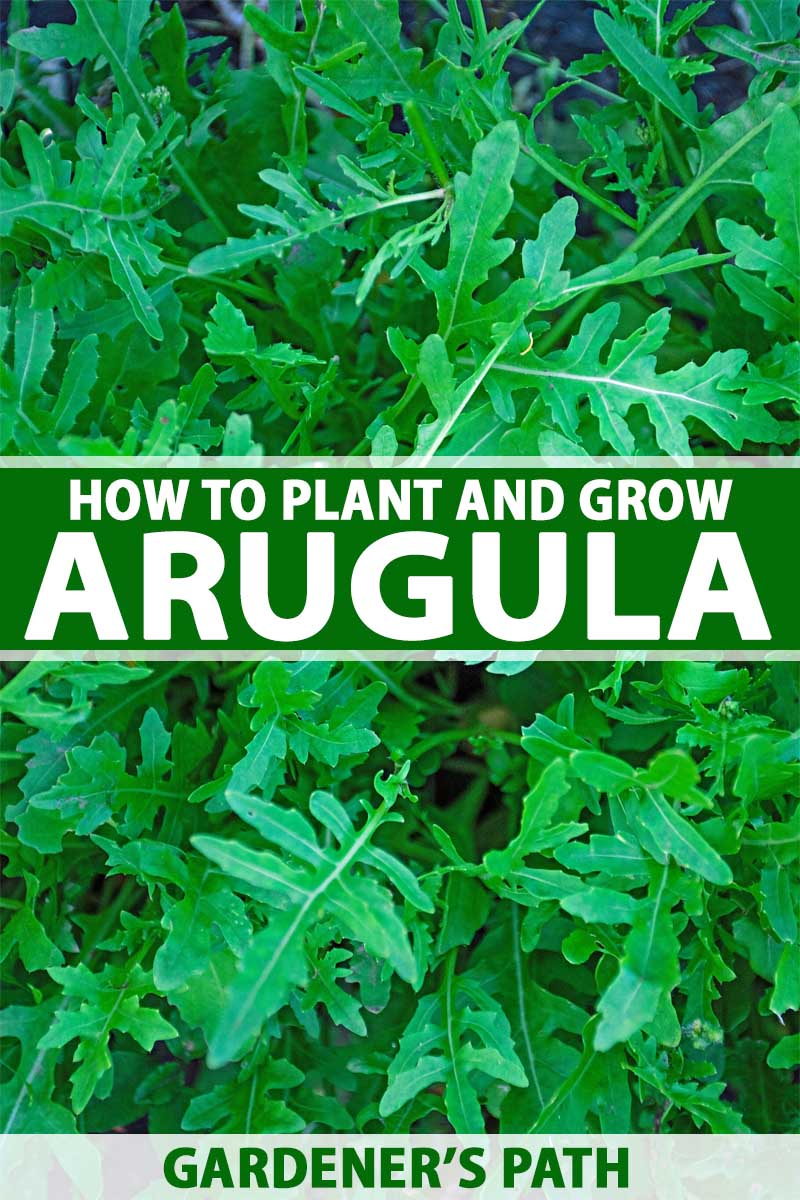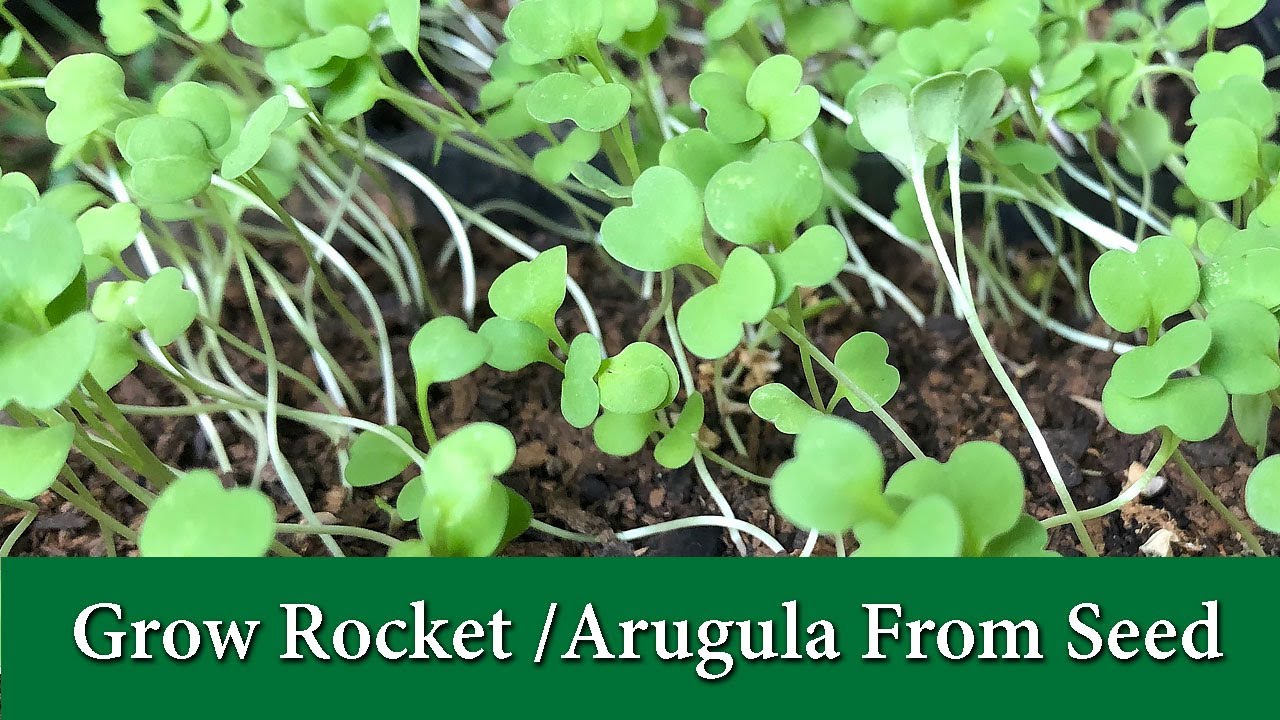To grow arugula seeds, prepare a well-drained soil, sow the seeds 1/4 inch deep, and keep the soil consistently moist during germination and growth. Mix in compost before planting for added nutrients and harvest the leaves when they are young and tender for best flavor.
When it comes to adding fresh and peppery flavors to salads, sandwiches, and other dishes, arugula is a popular choice among gardeners. This nutrient-packed green leafy vegetable is not only delicious but also easy to grow from seeds. With the right conditions and care, you can cultivate your own arugula crop and enjoy a continuous supply of fresh greens throughout the growing season.
We will guide you on how to successfully grow arugula seeds in your garden or container, ensuring a bountiful harvest of this zesty and nutritious leafy green. So let’s get started and embark on the journey of growing arugula from seeds!

Credit: gardenerspath.com
How to Grow Arugula Seeds: Step by Step Guide
Choosing The Right Variety Of Arugula Seeds
When choosing arugula seeds, it’s important to consider your climate and growing conditions. Arugula is a cool-season crop, so ensure that your climate is suitable for its growth. Look for varieties that are known to thrive in your particular climate. Taste preferences also play a role in selecting the right variety. Arugula can have a range of flavors, from mild to spicy, so choose a variety that suits your taste buds.
Another factor to consider is the space available for growing. Some arugula varieties are more compact and are therefore suitable for smaller spaces, such as containers or raised beds. Others may require more room to spread out. Take into account the space you have available and select a variety accordingly.
Preparing The Soil For Arugula Seeds
When preparing the soil for arugula seeds, it is important to clear the area of weeds and debris. This will ensure that the seeds have the best chance of germination and growth. Loosening the soil is also crucial as it helps to improve drainage, preventing water from pooling around the seeds. Additionally, adding compost or organic matter to the soil will provide the necessary nutrients for healthy plant development. This will result in vibrant and flavorful arugula leaves. By following these simple steps, you can create the ideal environment for your arugula seeds to thrive.
Sowing Arugula Seeds In Containers Or Beds
When sowing arugula seeds in containers or beds, it is important to determine the optimal planting time. Arugula is a cool-season crop that thrives in temperatures between 40-55°F (4-13°C). Planting arugula too early or too late can impact its growth and taste. Generally, it is best to sow arugula seeds in early spring or late summer when the temperature is cooler.
Before planting, create furrows or holes in the soil for the arugula seeds. This will make it easier to sow and space the seeds properly. Arugula seeds should be sown at a depth of about ¼ inch (0.6 cm) and spaced about 1-2 inches (2.5-5 cm) apart.
Proper spacing is crucial for the arugula plants to grow and develop fully. It allows each plant enough room to spread its leaves and develop a strong root system. Overcrowding can lead to stunted growth and competition for nutrients.
Caring For Arugula Seedlings
When caring for arugula seedlings, it is important to pay attention to their watering requirements. Arugula plants prefer moist soil, so make sure to water them regularly. However, be cautious not to overwater, as it can lead to root rot. A good way to check if the plants need watering is to stick your finger about an inch into the soil – if it feels dry, it’s time to water.
In terms of fertilizing arugula plants, a balanced fertilizer with equal amounts of nitrogen, phosphorus, and potassium can be used. Apply the fertilizer once the seedlings have developed a good set of leaves, and repeat every three to four weeks throughout the growing season.
Protecting the seedlings from pests and diseases is essential for their growth. Common pests that attack arugula include flea beetles and aphids. You can use organic insecticides or natural deterrents like neem oil or diatomaceous earth to control these pests. It is also important to keep the growing area clean and free from weeds, as they can harbor diseases.
Harvesting Arugula Leaves
Knowing when to harvest arugula is crucial for obtaining the best flavor and texture. Arugula leaves can be harvested as soon as they reach a desired size, usually about 2-3 inches in length. The leaves should be bright green and firmly attached to the stem.
To achieve continuous yields, it’s important to use the “cut-and-come-again” technique. This involves harvesting only the outer leaves, allowing the inner leaves to continue growing. By regularly harvesting the outer leaves, you can enjoy a constant supply of fresh arugula throughout the growing season.
Once you’ve harvested your arugula leaves, it’s important to store them properly to maintain their freshness. It’s best to lightly wash the leaves to remove any dirt or debris, then pat them dry with a clean towel. Place the leaves in a resealable plastic bag, removing as much air as possible before sealing. Store the bag in the refrigerator, where the arugula should stay fresh for up to a week.
Troubleshooting Common Issues With Arugula Seeds
Difficulty with germination rates can be a common issue when growing arugula seeds. To overcome this problem, start by carefully selecting high-quality seeds from reliable sources. Properly storing the seeds in a cool and dry place will ensure their viability. Before planting, consider soaking the seeds in water for a few hours to help speed up the germination process.
Another concern when growing arugula is managing bolting and flowering. Prevent this by keeping the plants in a cool, shaded area, especially during hot weather. Regularly harvesting the leaves can also help promote leaf growth rather than flowering.
Pest infestations can greatly affect the health of arugula plants. Implementing preventive measures such as using row covers or netting can help keep pests like aphids and flea beetles at bay. Additionally, companion planting with herbs like mint and dill can deter pests from attacking your arugula.
Tips For Extending The Arugula Growing Season
Succession planting is a great technique to ensure a continuous harvest of arugula. By staggering the planting of seeds every few weeks, you can enjoy fresh arugula throughout the growing season. This means you can have a steady supply of this peppery green, rather than getting overwhelmed with a large harvest all at once.
In cooler seasons, arugula thrives. It prefers temperatures between 40°F and 65°F (4°C and 18°C). Planting arugula in spring and fall will provide optimal conditions for growth. Be sure to provide it with plenty of sunlight and well-drained soil.
However, during colder temperatures, protective measures are necessary to keep your arugula plants healthy. Consider using row covers or cold frames to shield them from frost, especially during frost-prone months. These protective measures will help maintain a favorable growing environment for your arugula.
Frequently Asked Questions Of How To Grow Arugula Seeds
How Long Does It Take To Grow Arugula From Seed?
Arugula seeds typically take about 5 to 7 days to germinate and can be harvested in as little as 25 to 40 days after sowing.
Does Arugula Come Back Every Year?
Yes, arugula is a perennial plant that comes back every year without replanting.
What Month Do You Grow Arugula?
Arugula grows best in cool temperatures, so it’s typically planted in early spring or late summer for a fall harvest.
Does Arugula Need Full Sun?
Arugula thrives in full sun, requiring at least 6 hours of direct sunlight daily.
Conclusion
To sum up, growing arugula seeds can be a rewarding experience for both seasoned gardeners and beginners. By following the steps outlined in this blog post, you can ensure a successful harvest of this flavorful and nutritious leafy green. Remember to provide the right conditions for germination, maintain consistent watering, and monitor for pests.
With patience and proper care, you’ll be enjoying fresh arugula from your own garden in no time. Happy gardening!

